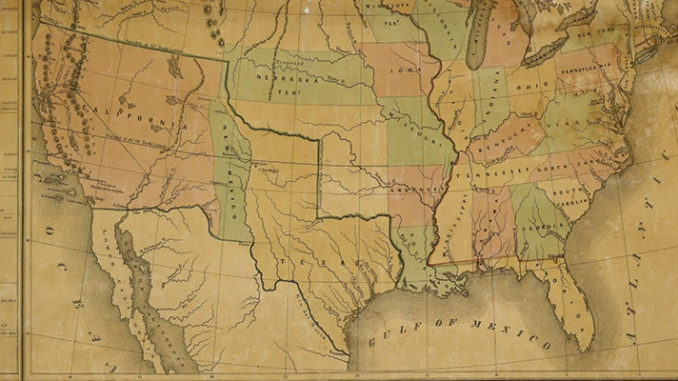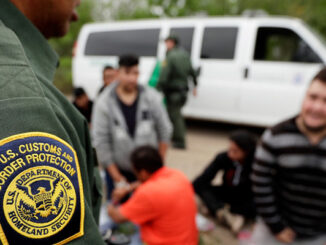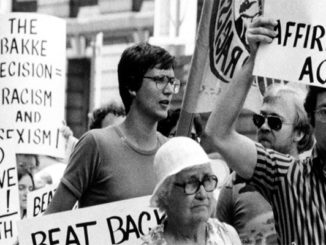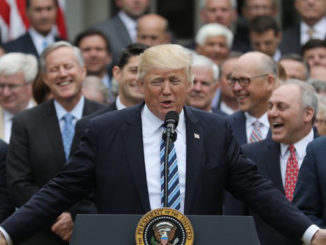
The alleged El Paso gunman has the history all wrong in his alleged “manifesto.”
by Gillian Brockell
Shortly before the alleged El Paso gunman attacked a shopping center Saturday, authorities believe he posted a so-called manifesto to the website 8chan. It rails against a “Hispanic invasion of Texas,” embracing a white nationalist version of Texas that has never existed.
Neither “Hispanics” nor Mexicans have ever invaded an all-white Texas; when white American settlers arrived in the 1820s, Mexicans of Mestizo and Criollo Spanish descent were already there. And though the American settlers were initially invited by the Mexican government, by the time of the Texas Revolution in 1835, they were flooding into the region illegally.
This is a history that the suspected shooter, who attended grade school in a suburb north of Dallas, would have been exposed to, because Texas history is a required subject in Texas schools.
“Texas students are taught in fourth and seventh grade that Hispanics, specifically Mexicans, have been an enormous part of the state’s history, to include the fact that much of Texas was actually considered Mexico at one point,” said Kollette Steiger, a longtime Texas teacher certified in Texas social studies.
And lest one think this “multicultural” aspect of Texas history is a recent change in the curriculum, Steiger says she was taught this when she was a student in Texas schools more than 30 years ago.
Spanish explorers first traveled through what is now Texas in the 16th century. It wasn’t unoccupied land — explorers encountered numerous Native American societies, including the Karankawa, Caddo, Apache and Comanche, according to the Bullock Texas State History Museum in Austin. Texas derives its name from the Caddo word “taysha” — meaning “ally” or “friend.”
By the time Mexico achieved independence from Spain in 1821, there were approximately 3,300 Mexicans living in the region, called Tejanos, according to historian J.R. Edmondson. Eager to build a buffer against Native Americans, Mexico passed a law encouraging “Anglo Americans” to settle the combined state of Coahuila y Tejas in 1824.
Trouble arose almost immediately, according to the museum. Thousands of Americans came, mostly from the South, and they soon outnumbered Tejanos. They brought with them enslaved people, even though slavery was prohibited in Mexico. And they refused to see themselves as Mexican nationals, calling themselves “Texians.”
The Mexican government responded by encouraging more Mexicans to move to the region. Then, in 1830, it banned further immigration from the United States altogether. It also began cracking down on slavery and sent in Mexican troops.
By 1835, with thousands of Americans still flooding into Texas, the conflict boiled over into open insurrection. When Mexican troops arrived in Gonzales to retrieve a cannon they had given the settlers to protect against Native American attacks, a company of armed Texians pointed the cannon at the troops, waving a flag that dared the soldiers to “come and take it.”
On March 2, 1836, the Texians officially declared independence at a constitutional convention at Washington-on-the-Brazos, near modern-day College Station.
Forty percent of the newly assembled Texan army were Americans who had arrived after the fighting began, according to historian Paul D. Lack. Though the Texan army had suffered early defeats at Goliad and the Alamo, Mexican troops were forced to surrender by the end of April. By September, the Republic of Texas had elected its first president, Sam Houston.
Though Texans had settled what is now East and Central Texas, the nascent country also claimed land in what is now South, West and North Texas, plus parts of New Mexico, Oklahoma and Colorado. Mexico continued to dispute these claims when, 10 years later, the United States annexed Texas, spurring the U.S.-Mexican War.
The United States won the war — and the Rio Grande border — in 1848, but that didn’t suddenly turn Texas into an all-white state. Many Tejanos had fought for Texas independence alongside Texians. Some, like Tejano veteran Juan Seguin, were later falsely accused of being traitors and forced into exile. Others continued to live in the place their families had called home for generations.
As both the El Paso shooter and Sen. John Cornyn (R-Tex.) recently noted, the Hispanic population in Texas is growing much faster than the white population. But that isn’t necessarily because of an “invasion” — a word used by both the El Paso shooter and President Trump to describe immigration from Mexico and other Latin American countries.
Yes, the economy in Texas is booming, attracting workers from across both state and national boundaries. But according to a 2014 Pew Research Center study, 70 percent of Hispanic Texas residents were born in the United States.
Many of them, particularly in Duval County and the city of San Antonio, are descended from Tejanos, whose roots in Texas are as deep as the ubiquitous mesquite.
.
Gillian Brockell is a staff writer for The Washington Post’s history section. Follow her
.



